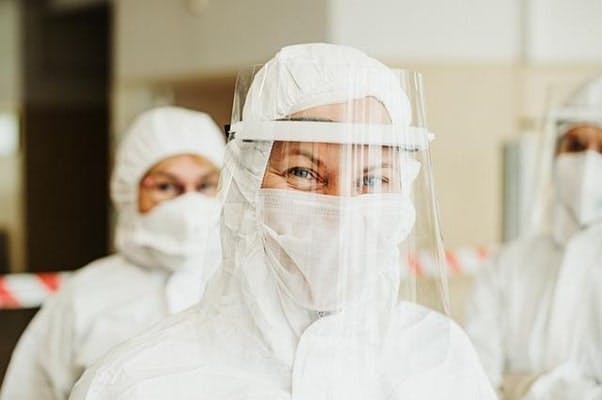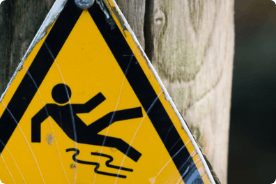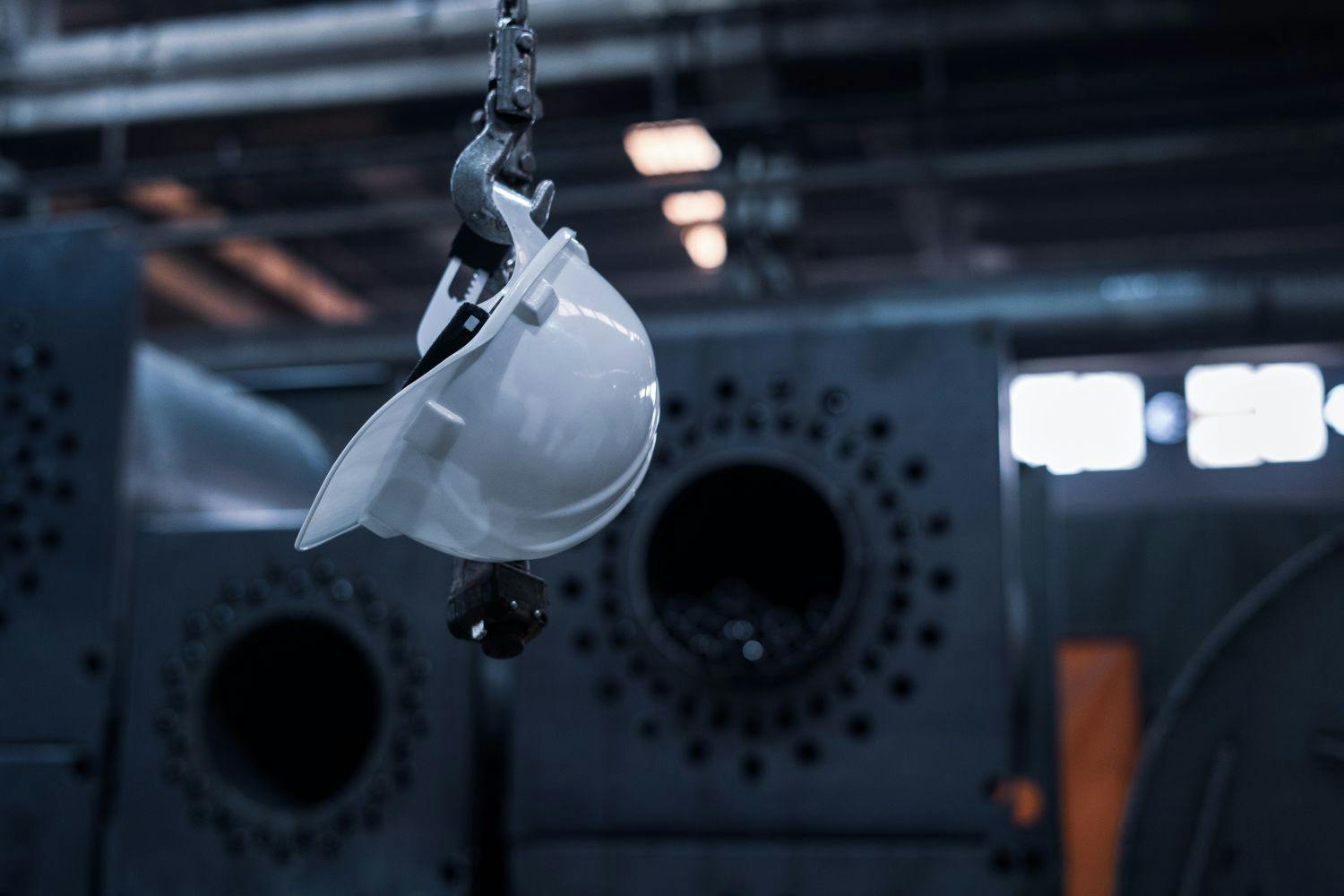First published on Tuesday, Aug 02, 2022
Last updated on Tuesday, Aug 02, 2022
Handling chemicals under high pressure can carry a range of risks at work.
Any job that involves airborne hazardous substances carries a risk of eye injury. To reduce these risks, all employees need to wear proper eye protection and follow the correct health & safety measures.
You have a duty of care to ensure your employees are safe at work. If safety precautions aren't followed, your business could face costly compensation claims.
In this guide, we'll explain what potential eye hazards at work are, what eye protection to use, and how to prevent all risks.
What Are Potential Eye Hazards at Work?
Several potential eye hazards require workplace protection.
This is needed when the following hazards are present at work:
- Projectiles: Such as dust, concrete, metal, wood, or other particles.
- Chemicals: Such as splashes or fumes.
- Radiation: Such as visible light, ultraviolet radiation, heat or lasers.
- Pathogens: Such as hepatitis and HIV from blood, or fluids.
Digital eye strain can cause severe damage to your employee's eyes. These problems can come from prolonged use of computers, phones, and other screen devices.
Causes of Eye Injuries in the Workplace
Several types of eye injuries can occur in the workplace, such as:
- Flying debris: Metal and glass are harmful to the cornea because of an increased risk of scratching.
- Flash burns: These can occur when the eyes are exposed to bright ultraviolet light.
- Chemicals: Contact with a type of corrosive chemical can cause extensive damage to the eyes.
- Allergies: Food, spices, flowers, detergents, perfume and other substances could cause conjunctivitis.
- Flying particles or foreign objects: Such as a speck of dust, a wood chip or a metal shaving shouldn't be there.

What Occupations Have a High Risk for Eyes?
Occupations that carry a high risk for eye injuries are:
- Construction.
- Manufacturing.
- Mining.
- Carpentry.
- Electrical work.
- Plumbing.
- Welding.
- Auto-repair.
If your occupation isn't listed here, it's still a good idea to conduct regular risk assessments at work. This can eliminate hazards from causing eye injuries and reduce risks.
For industrial jobs, contact lenses can improve safety and productivity as well as improve vision at work. Using contact lenses instead of eyeglasses may increase the fit of protection devices such as eyeglasses and full-face respirators.
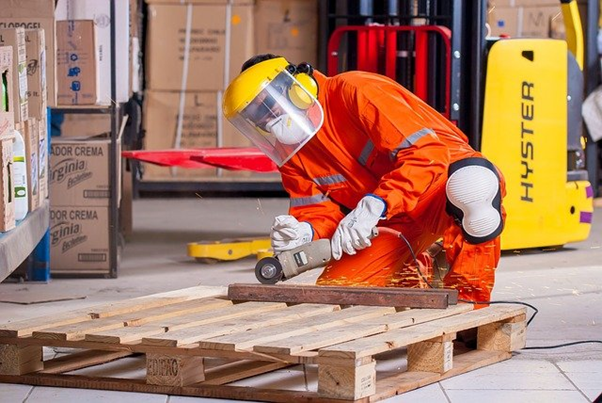
How Can You Protect Your Eyes from Injuries?
There are four things you can do to protect your employee's eyes at work, such as:
- Outlining the eye safety dangers in the workplace.
- Removing any hazards before starting work.
- Wearing eye protection.
- Keeping eye protection in good condition and replacing them when damaged.
Appropriate eyewear should also be worn based on your hazard assessment. Below are some examples of personal protective eyewear you can introduce.
Safety Glasses & Safety Goggles
Safety glasses are crucial for the protection of the eyes. These lenses and frames are significantly stronger than regular eyeglasses. Safety lenses are available in plastic and polycarbonate. However, polycarbonate lenses provide the highest level of protection from impact.
To prevent eye injuries, your employees should wear safety glasses with side protection or side shields.
Safety glasses should be plastic and meet the minimum requirements for protecting your employee's eyes.
Safety goggles can provide eye protection from flying objects or a chemical splash.
They can also protect the eye from hazards coming from any direction because of the secure shield around the entire eye.
Face Shields & Protective Equipment
Face shields can protect your employees from chemicals, heat, or pathogens. Other protective equipment includes items like helmets. The most common occupations that use helmets are welding and working with molten materials.
Helmets should be used alongside safety glasses or goggles to ensure adequate protection. This is because once the shield is lifted or it’s damaged, the eyes are still protected.
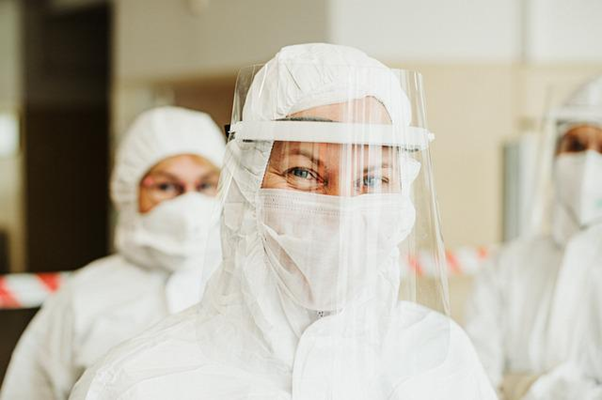
How Can Workplace Hazards Be Eliminated?
To eliminate hazards at work, you must first identify potential eye injury hazards. As an employer, you need to be aware of eye safety dangers in your workplace.
Eliminate any hazards before you start work using equipment screens, machine guards and, eye safety equipment. You can eliminate eye hazards by This can also be done by conducting a hazard assessment. It should cover the following:
- Walk through the workplace and spot potential hazards.
- Speak about risk factors with your staff.
- Outline recurring problems through your injury records.
To reduce the risk of an eye injury, you need to control the potential hazards. You should:
- Replace high-risk equipment with safer alternatives.
- Install safety barriers.
- Make sure protective eyewear is in good condition, such as safety glasses.
- Signpost areas in work that require eye protection.
- Provide regular safety training for your staff.

What Should Be Done in an Eye Emergency?
In an emergency, you need to provide medical treatment to the employee immediately.
If someone has pain in their eye, blurred vision, or is suffering from a loss of sight, medical assistance must be called.
There are a few steps you can follow to ensure the safety of your employees:
First Aid for Chemicals in the Eye:
- Immediately clean the eye with saline water for 15 minutes.
- If contact lenses are being worn, immediately remove them.
- Avoid wrapping the eye with a bandage.
- You may require medical treatment after cleaning.
First Aid for Particles in the Eye:
- Avoid rubbing the eye.
- Try and let the tears wash the speck out.
- Lift the eyelid outward and down over the lower eyelid to remove the particle.
- If it doesn't come out, keep the eye closed and bandage it slightly.
If it hasn't been removed after several days, do not delay medical care.
First Aid for Blows to the Eye:
- Apply a cold compress without putting pressure on the eye.
- If the eye has severe pain or reduced vision, seek immediate medical assistance.
First Aid for Cuts and Punctures to the Eye:
- Don't wash the injured eye out.
- Don't attempt to remove anything that is stuck in the eye.
- Cover the eye with a small shield and seek medical assistance.

How Do Workers Acquire Eye Diseases?
According to the National Institute for Occupational Safety, eye diseases can be transferred through mucous membranes as a result of exposure to things such as:
- Blood splashes.
- Droplets from coughing or sneezing.
- Touching eyes with a contaminated finger or object.
The National Institute for Occupational Safety also said infectious diseases can be minor but can worsen to HIV or hepatitis B virus.
How Can You Prevent Eye Injuries
The main thing you can do to prevent eye injuries in the workplace is follow the recommended safety measures.
All employees should wear protective eyewear during high-risk assignments to reduce potential injuries.
In extreme situations, protecting your eyes can be done by:
- Identify occupational safety dangers.
- Complete risk assessments for eye protection.
- Remove all hazards before starting work.
- Use proper eye protection.
- Wear goggles, safety glasses, face shields, and helmets (or a combination of them).
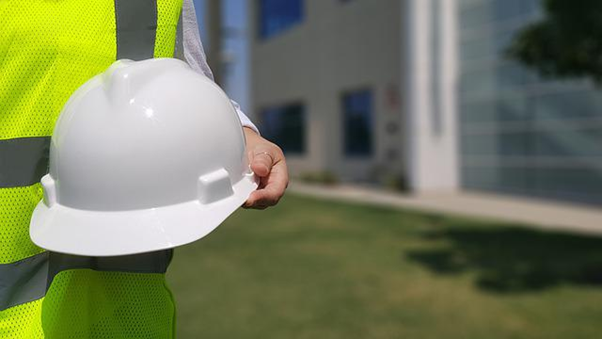
Manage Eye Protection With BrightHR
Managing eye protection in the workplace can be difficult. That's why you need to take the correct safety measures to ensure the utmost safety of your employees.
Before starting any work, you should eliminate any hazards and reduce the number of risks. All employees should wear proper eye protection when using high-risk equipment or harmful chemicals.
If these are neglected or an employee suffers from an accident, or medical care, you could face costly compensation claims.
BrightHR can help you manage eye protection with our BrightAdvice helpline. Don’t hesitate to call us if you need any help with preventing hazards to your employee's eyes.
Book a free demo today or give us a call on 0800 783 2806
